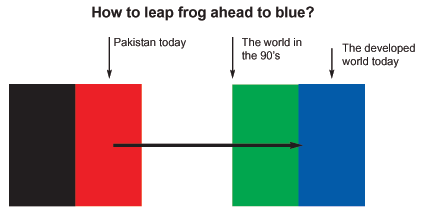A paint factory catches fire. All the city’s fire brigade is involved in trying to put out the fire. Still, the burning chemicals continue to burn throughout the night. The firm puts out an ad in the papers soon after telling the world that they are back to business as usual. An insurance company puts out a press release telling the world that they have made the insurance payment in record time.
Life moves on in Pakistan. Was any question asked as to who will bear the environmental cost? Did any spokesman for the company even verbally accept the company’s shortcomings – perhaps in the shape of shoddy standards of safety that resulted in the inferno?
This seems to be a perfect example of a company that is solely and soullessly treating profits as their only motive to exist. No higher goals here. No triple bottom line considerations. HSE? Green practices? Stakeholder analysis? These seem like high flying ideals in the world where black and red seem to be the only colours we can see.
International Context
This concept was introduced by international advertising firm JWT, as one of their predictions for 2008.
Blue is the New Green: Climate change has quickly become the driver of Environmentalism 2.0, and people worldwide understand that climate is all about the seas and the sky-both blue. Our effluents, our emissions, both impact these blue bodies.
Trend Alert: Watch for “green” to become a subset of “blue,” which is coming to denote the much larger emerging spirit of good-citizen ethics. Back to basics we learnt in our KG primary colours art class.
“The key driver of Environmentalism 2.0 is the climate, and most people understand that the climate is all about the seas and the sky, both of which are blue,” shared Ann Mack, Head of TrendSpotting at JWT. Mack who goes so far as to claim that blue will overtake green as the environmental movement’s main hue: “Blue is the new green.”
The Blue>Green Equation
With CO2 emission capping now being a global priority, blue is easily more important than green in terms of generating hype and action towards the environment. This is now being seen in a whole gamut of steps that companies are taking, including calculating and reducing their carbon footprint. Countries are also being cornered by activists for being slow on carbon reductions. Interestingly enough blue is also the colour of power and strength, and hence, the corporate world’s reluctance to turn green may be finally overcome (with a subliminal start at least).
Turning Pakistan Blue
Having missed the whole “green” part of the developmental cycle, Pakistan may be able to leapfrog ahead to the Blue Zone. Although it seems quite unlikely. Both because an ill-informed populace cannot begin to demand its own rights, much less its rights in relation to the integrity of the environment it lives in. Also because regulations are tightening: developing countries after all, are being punished for the acts of the developed world, or so the argument swerves.
Companies, irrespective of the government’s stand on the issue, can start with the following:
As a first step, companies must to take a longer term view – which some do, and many don’t, particularly regarding the external environments. Corporate entities generally take the view that they are passive participants in the larger environment. However, this is not always the case, and through industry groups, and other forms of lobbying, they can influence policy on a much larger scale.
Secondly, companies need to make an assessment of the CO2 or other greenhouse emissions they are responsible for. This is easily begun by using a website like liveneutral.org, which has calculators for individuals, companies and communities – with the journey beginning for ‘the price of a petrol tank’ (depending on where you live of course).
Thirdly, Sustainability, which used to be a word bandied around by a group of ‘tree huggers’, is now the buzz word, and since corporate entities need buzz words, let the new Word -with ensuing policy and action, of course- be: Bluing(!)
1. http://www.jwt.com/pdf/news/trends2008.pdf)
2. (http://www.chicagotribune.com/features/lifestyle/chi-0124blueisgreenjan24,0,2901237,full.story)






